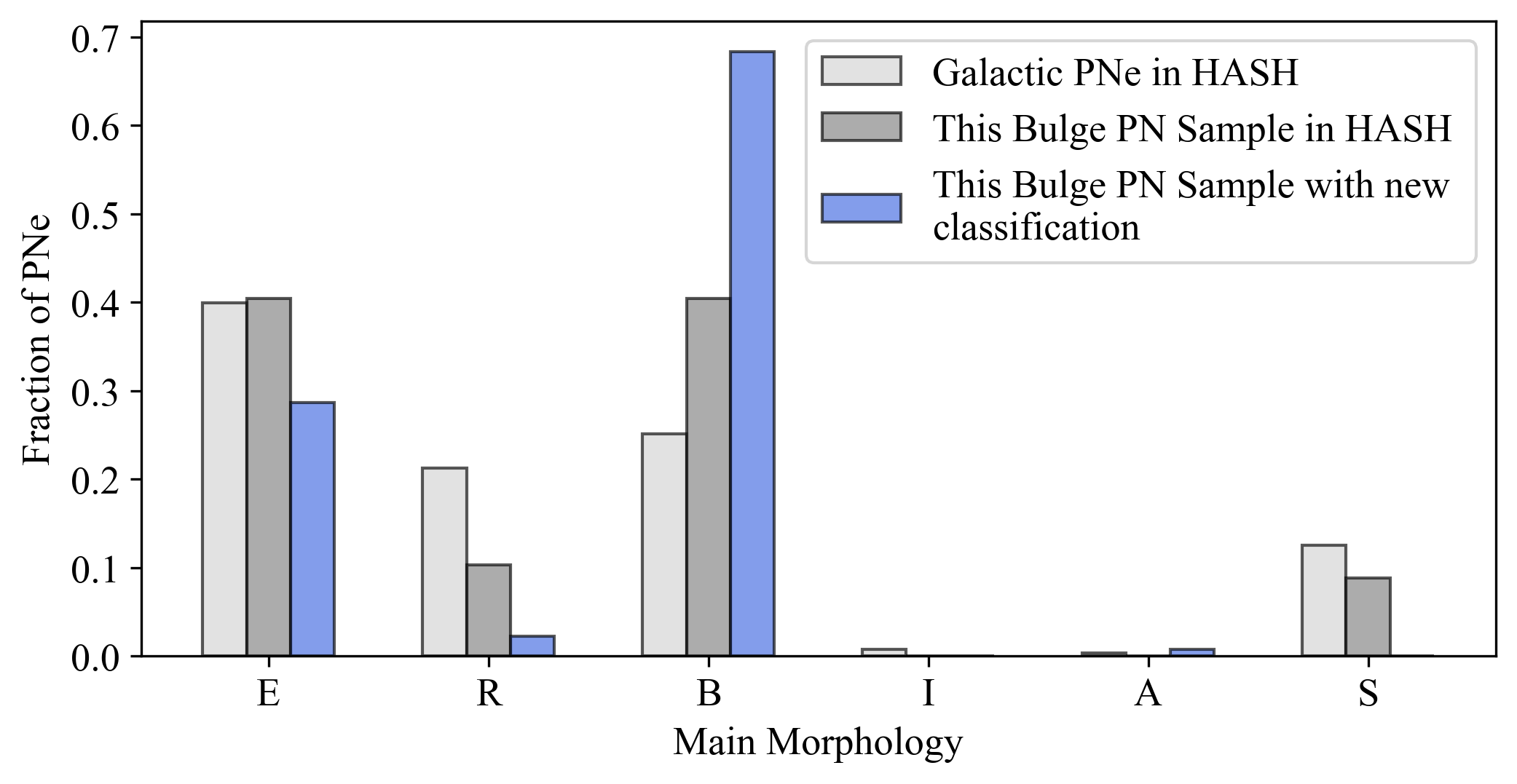2023MNRAS.519.1049T
Published in Monthly Notices of the Royal Astronomical Society, 2022
Abstract: This is the first in a series of papers that present sets of different results for 136 compact, known planetary nebulae within a 10 × 10 degree region of the Galactic bulge. We use a large, previously unpublished sample of our own extensive ESO 8 m VLT deep imaging and spectroscopic data. This is combined with archival deep HST imaging where available to provide a detailed morphological classification and study. The influence of angular resolution and sensitivity when assigning a morphology is discussed.


A large fraction (68%) of the sample are shown to be bipolars and the implications for this in the context of planetary nebulae progenitors are explored. Four new planetary nebula central stars are also identified which are not in Gaia. This is based on both VLT and deep archival Pan-STARRS broad-band imagery. Some 11 putative central stars previously reported, based on Gaia positions, are also not the true central star. In other cases the Gaia central stars reported in the literature are actually based on the overall centroid position of a very compact planetary nebula rather than the actual central star within it. Gaia parallax distances and kinematic ages for PNe in this sample are provided where possible based on fresh angular size measures from the new VLT imagery and Gaia distances and literature expansion velocities when available. All these results are discussed within the context of the overall characteristics of the Galactic bulge and its planetary nebula population.
Recommended citation: Tan, Shuyu, Quentin A. Parker, Albert Zijlstra, and Andreas Ritter. “Morphologies and Central Stars of Planetary Nebulae in the Galactic bulge from VLT, HST and Pan-STARRS imaging.” Monthly Notices of the Royal Astronomical Society 519, no. 1 (2023): 1049-1067.
